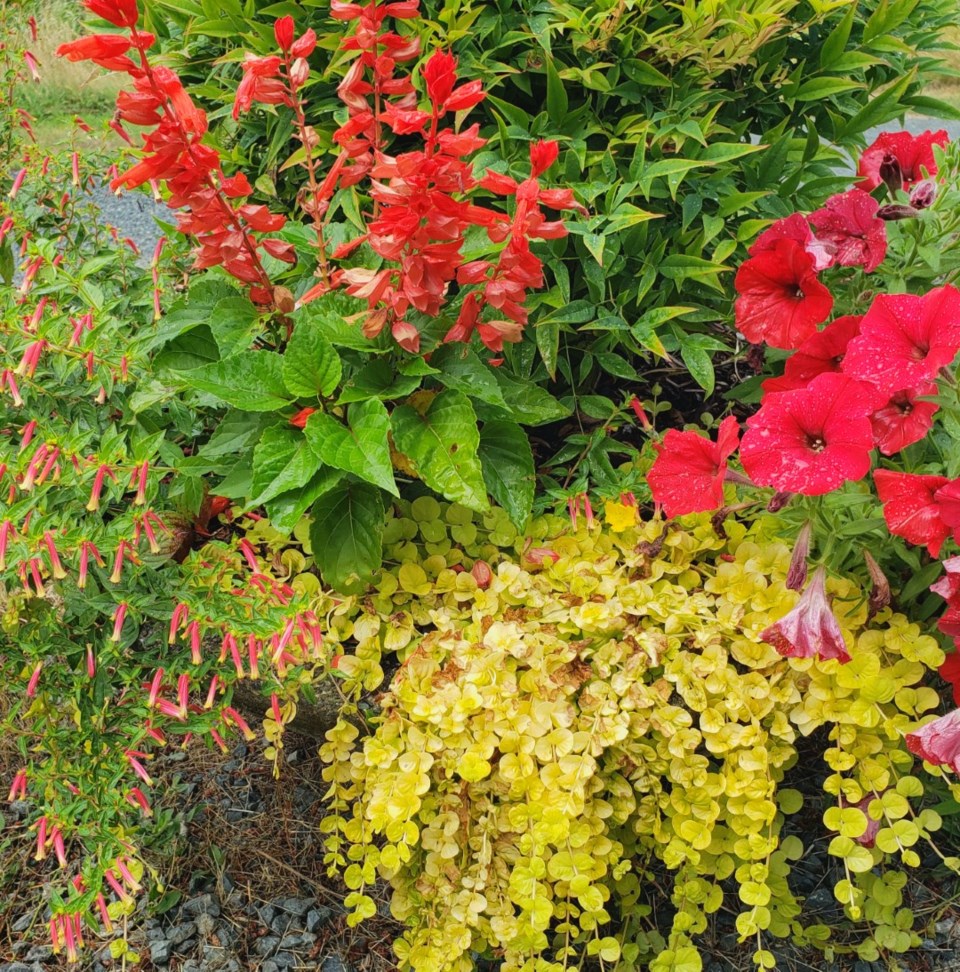August is most definitely the best month to enjoy the garden. Raspberries, strawberries, tomatoes, peppers and more are all giving back to us for our hard work in the garden. Even better than the produce, the colour in the garden is exquisite. All of our tropical plants go outside with all the other annuals and are blooming up a storm. Passion flower, clivia, cannas callas and even non-hardy hydrangeas are currently С����Ƶ enjoyed immensely.
However, one of the best and worst parts of living on the prairies is our ever-changing weather. It is wonderful but challenging, interesting and frustrating but it is what we live with. It is somewhat like our gardens - ever evolving and changing to continue to share the challenges of keeping it both beautiful and fruitful. Already, we have been reminded that it is time to pull out the bunny hugs and the fleece. From 40°C to 15°C is rather a large change to adapt to.
There are still many tasks to be done as in August and as the garden ripens, nature reminds us that fall is near. Many gardeners consider August a jewel. We can finally put down some of our tools to enjoy the warm sunshine during the daylight hours. The manic days of summer have passed and our chores involve that endless tie-up of floppy flowers and tomatoes; harvesting what is ripe and removing the odd tenacious weed. Deadheading perennials and annuals that have finished blooming is a good chore and produces more blooms to enjoy.
Replanting lettuce and spinach that have gone to seed and removing worn-out annuals and vegetables is a great August chore. Pruning back annual herbs will ensure that the bounty continues. My basil crop has been rejuvenated once again and will sure to continue to grace our table for the next couple of months.
If you are looking for a bit more physical work, dividing perennials that have finished blooming is another timely chore. How do you know if your perennials need dividing you may ask? Certain signs like the centre of the plant looking a bit dead; loss of flowering profusion; or just finding the border С����Ƶ a little bit crowded are signs to share the wealth with your gardening friends.
If you are a gardener who likes to collect seed, August is the time to get going. First, it is necessary to correctly identify the plant and ensure you understand its lifecycle. Remember that heirloom plants are the best choice for collecting seed. Learn how the seed will ripen and how the seed is dispersed to allow you to collect the seed at the right time and the best level of maturity.
When it is time to collect the seed, gather them when they are ripe but before they are shed by the parent plant. Remove capsules, heads or pods as they begin to dry and separate the seed later as they are more completely dry. If you are collecting seed from a plant that tends to disperse its seed with vigour, simply tying a paper bag over the seed head will ensure you can collect the seed. After collecting the seed, dry them in a warm, dry location for another week or two. Before storage, it will be necessary to separate the seeds from other plant parts. Store the seeds in airtight containers in a cool, frost-free location.
Last but not least – begin to plan for purchasing spring flowering bulbs to plant in September. Nothing says spring like scilla, muscari, and tulips poking through the late spring snow. Enjoy the remainder of your summer.
Hanbidge is the Lead Horticulturist with Orchid Horticulture. Find us at ; by email at [email protected]; on Facebook @orchidhort and Instagram at #orchidhort.
Tune into GROW Live on our Facebook page or check out the Youtube channel GROW




